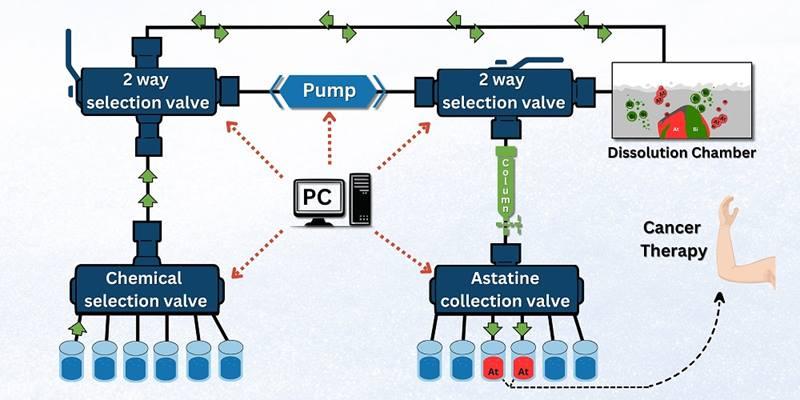Automated Nuclear Chemistry Boosts Astatine Production for Cancer Therapy

Concept of the automated system for remote dissolution of the irradiated bismuth target and astatine recovery in nitric acid media. Conceptual design by Evgeny Tereshatov, Texas A&M University Graphic Design by Nathan Clark, Office of Science, Communications and Public Affairs
Astatine-211 (At-211) is a promising radioisotope for cancer therapy but its availability is limited due at least in part to its very short half-life of 7.2-hours. Only five facilities in the United States can produce it, which includes the Department of Energy Isotope Program (DOE IP) University Isotope Network partner site, The Cyclotron Institute at Texas A&M University. This facility reliably produces medically relevant quantities of At-211 available through the DOE IP.
To expand access and streamline production, a team of researchers designed and tested an automated protocol aimed at reducing the At-211 processing procedure from dissolution of the irradiated target through column purification in just 20 minutes, while achieving an impressive 95% yield. This advancement enhances production efficiency but also ensures the high-quality distribution of At-211 to meet growing research and clinical needs.




